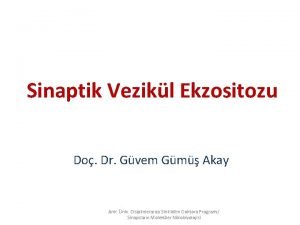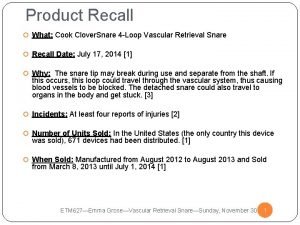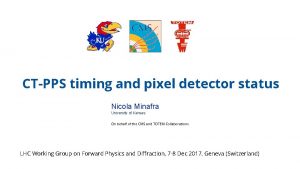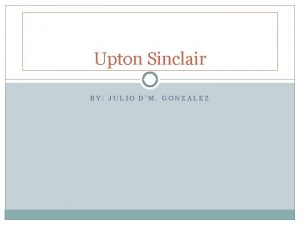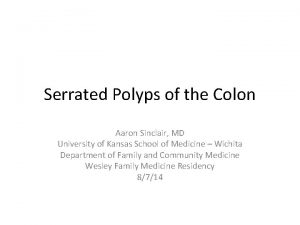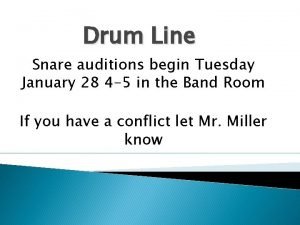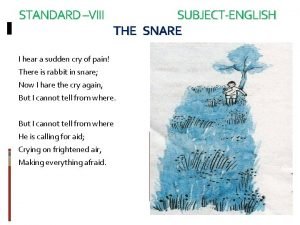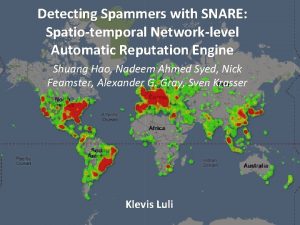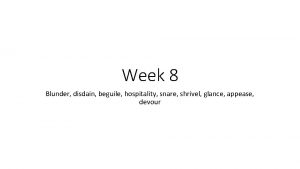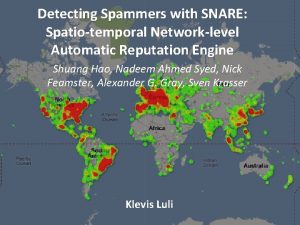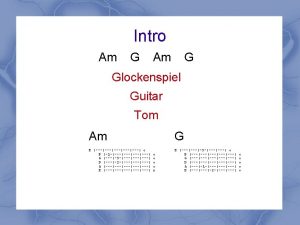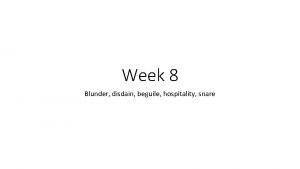Snare Selection Aaron Sinclair MD University of Kansas





















- Slides: 21

Snare Selection Aaron Sinclair, MD University of Kansas School of Medicine - Wichita Department of Family and Community Medicine Wesley Family Medicine American Association of Primary Care Endoscopy President

Disclosures • I received two chipotle meals in discussing snares with Boston Scientific. • No regrets!

ESGE Guidelines 2017 • ESGE recommends against the use of cold biopsy forceps (CBF) excision. May consider in the case of a polyp sized 1 – 3 mm where cold snare polypectomy is technically difficult or not possible. (Moderate quality evidence; strong recommendation. ) • ESGE recommends cold snare polypectomy (CSP) as the preferred technique for removal of diminutive polyps (size ≤ 5 mm). (High quality evidence; strong recommendation. ) • Hot snare polypectomy (HSP) (with or without submucosal injection) for removal of sessile polyps 10 – 19 mm in size. (Low quality evidence; strong recommendation. )

ASGE Recommendations 2020 • For diminutive (<5 mm) and small (6– 9 mm) lesions recommend cold snare polypectomy to remove diminutive (<5 mm) and small (6– 9 mm) lesions due to high complete resection rates and safety profile. (Strong recommendation, high-quality evidence) • We recommend against the use of cold forceps polypectomy to remove diminutive lesions due to high rates of incomplete resection. For diminutive lesions <2 mm, if cold snare polypectomy is technically difficult, jumbo or large-capacity forceps polypectomy may be considered. (Strong recommendation, moderate-quality evidence) • Recommend against the use of hot biopsy forceps for polypectomy of diminutive and small lesions due to high incomplete resection rates, inadequate histopathologic specimens, and complication rates. (Strong recommendation, moderate-quality evidence) • Non-pedunculated (10– 19 mm) lesions: Suggest cold or hot snare polypectomy (with or without submucosal injection) to remove 10 - to 19 -mm non-pedunculated lesions. (Conditional recommendation, low-quality evidence)

Big Push To Use Cold Snares • Cold forceps resection of diminutive polyps is associated with high rates of incomplete resection. (10 -25% incomplete resection) • Hot snare polypectomy incomplete resection rates has been reported in 10% of 5– 20 mm neoplastic polyps and increases with polyp size (17% for 10– 20 mm polyps) • Hot biopsy forcep: Another prospective study involving patients with diminutive rectal adenomas found that the rate of remnant adenoma tissue after HBF polypectomy was 10. 8 %. • The Big Goal: Avoid INTERVAL Cancers! – 10 -30% of incomplete polypectomies are thought to result in interval cancers.

Cold Snares Improve Resection Rates • A recent randomized trial supports the use of a dedicated snare for cold resection. It found that incomplete resection of up to 10 mm polyps was significantly less frequent when using a dedicated cold snare compared with a standard snare (9 vs. 21%).

Smaller Snares Improve Resection Rates • Histologically complete resection rates and the frequency of complications for 175 colon polyps removed by cold snare polypectomy (CSP). • There was no significant difference in the histologically complete resection rate between endoscopic mucosal resection (EMR) and CSP. • There were also no significant differences in the frequency of complications including perforation and postoperative bleeding between EMR and CSP. • There were no significant differences in the frequency of complications between CSP using the short snare and that using the long snare. • Histological examination revealed that the complete resection rate of CSP using a short snare (61. 6%) was significantly higher than that of CSP using a long snare (44. 9%; P < 0. 05).

Cold Snares vs Conventional Snares • Cold Snare Thinner wire (0. 33 mm) 3 wires thick (1 x 3) Cuts mucosa Firmer plastic sheath Better margins (grips and holds) – Polyp tends to stay after resection – – –

Cold Snares vs Conventional Snares • Conventional Snare Thicker wire (0. 47 mm) 7 wires thick (1 x 7) Tears through mucosa Thinner plastic sheath Tends to slide especially on small and flatter polyps – Thicker wire can fling the polyp after removal – – –

Cold Snares vs Conventional Snares • Cold Snare Thinner wire (0. 33 mm) 3 wires thick (1 x 3) Cuts mucosa Firmer plastic sheath Better margins (grips and holds) – Polyp tends to stay after resection – – – • Conventional Snare Thicker wire (0. 47 mm) 7 wires thick (1 x 7) Tears through mucosa Thinner plastic sheath Tends to slide especially on small and flatter polyps – Thicker wire can fling the polyp after removal – – –

The gentle “push & cut” technique should be used for cold resection, in contrast to the “lift & cut” technique for hot snare polypectomy.

Cold Snare Technique for Diminutive Polyps Aim for 2 mm margins which is the size of the plastic catheter

Ensuring a clean base • Central tissue protrusions after cold snare resection of larger polyps can occur. Such protrusions do not contain adenoma tissue. • Polyps >6 mm typically • Tuttici 2015 study of 18 tissue specimens of the polyp stalk, no neoplasia identified.

Crescent snares Indications: – Folds and side walls – Anchor with the point and then roll it over

Hexagonal Snares Indications: – Flat polyps – Multiple polyps of varying size – EMR Features: – Memory points help with exact placement – Memory points cause it to have different shapes based on deployment – Easy to use for diminutive and small polyps

Rotatable Snares Indications: Right Sided Polyps Unable to rotate Loops in the colon

Troubleshooting Dedicated Cold Snare wire fails to cut through ensnared tissue - likely reflecting submucosal tissue entrapment. – One technique: “captured tissue was guillotined repeatedly in order to remove the polyp completely. ” – Minimize deep submucosal entrapment by maintaining insufflation during snaring and avoiding suction – Maintain full snare closure for up to 10 seconds because slow transection may occur

Troubleshooting Dedicated Cold Snare wire fails to cut through ensnared tissue - likely reflecting submucosal tissue entrapment. – Use techniques to maximize force transmission from the handle down the snare wire, and, finally if required – In a slow, controlled maneuver, partially reopen the snare to release entrapped submucosa while gently lifting the lesion away from the colon wall. – Repeated maneuvers to open and/or close the snare might compromise the rim of normal tissue

Final Thoughts 1. Cold forceps resection should be limited to small diminutive polyps (≤ 3 mm). 2. Cold snare resection may be considered as the primary resection method for polyps up to 10 mm in size. 3. A dedicate cold snare should be used for cold snare resection, particular for polyps smaller than 5 mm. 4. The gentle “push & cut” technique should be used for cold resection, in contrast to the “lift & cut” technique for hot snare polypectomy. 5. Snare wire fails to cut through ensnared tissue - likely reflecting submucosal tissue entrapment. This can be remedied with several optional techniques. 6. Newer dedicated cold snares have unique design elements that can aid in quick effective polypectomies.

References • Von Renteln D et al. Pushing the Limit: How to Get the Most Out of Cold Snares. . Am J Gastroenterol 2016; 111: 1217– 1219; doi: 10. 1038/ajg. 2016. 275; • https: //en. wikipedia. org/wiki/Therapeutic_endoscopy • Noda H et al. The Influence of Snare Size on the Utility and Safety of Cold Snare Polypectomy for the Removal of Colonic Polyps in Japanese Patients. J Clin Med Res. 2016 Sep; 8(9): 662 -6. • Li, Dazhou. Efficacy and safety of three different endoscopic methods in treatment of 6 -20 mm colorectal polyps. Scandinavian journal of gastroenterology. 03/2020 55. 3 362 -370 • https: //marlin-prod. literatumonline. com/cms/attachment/4 dc 1066 f-e 95 f 403 a-b 2 a 0 -9 ce 0 f 998 d 981/gr 2. jpg • Hewett D. Cold snare polypectomy: optimizing technique and technology (with videos) Gastrointestinal Endoscopy, 2015 -10 -01, Volume 82, Issue 4, Pages 693 -696 • https: //www. merckmanuals. com/~/media/manual/professional/images/sessi le_polyp_high. jpg? la=en&thn=0 • Kaltenbach T. Endoscopic Removal of Colorectal Lesions Recommendations by the US Multi-Society Task Force on Colorectal Cancer. GASTROINTESTINAL ENDOSCOPY Volume 91, No. 3 : 2020

References • Horiuchi et al. Prospective, randomized comparison of 2 methods of cold snare polypectomy for small colorectal polyps. PMID: 25922251. DOI: 10. 1016/j. gie. 2015. 02. 012 • https: //www. henryschein. com/us-en/images/medical/gi-endoscope 02. jpg • Tutticci et al. Characterization and significance of protrusions in the mucosal defect after cold snare polypectomy. Gastrointest Endosc . 2015 Sep; 82(3): 523 -8. • Pohl H. Standard polypectomy techniques: Choosing the right technnique. SAGES 2017. https: //www. youtube. com/watch? v=yf 4 JTe 6 mtso • https: //www. researchgate. net/profile/Misael_Uribe/publication/2825 19495/figure/fig 1/AS: 281002720153651@1444007677947/Polypsfound-during-colonoscopies-and-snare-polypectomy. png • Ferlitsch M. Colorectal polypectomy and endoscopic mucosal resection (EMR): European Society of Gastrointestinal Endoscopy (ESGE) Clinical Guideline. Endoscopy. 2017 Mar; 49(3): 270 -297.
 Fusión de membranas
Fusión de membranas Esophageal diverticulum
Esophageal diverticulum Kansas kansas state fight
Kansas kansas state fight Snare proteinleri
Snare proteinleri Trap luke
Trap luke What cook
What cook Head snare restraint
Head snare restraint Coyote roundup snare
Coyote roundup snare Writing center ku
Writing center ku Sim writing strategies
Sim writing strategies Ksu counseling center
Ksu counseling center Kansas state computer science
Kansas state computer science University of kansas
University of kansas Ku premed
Ku premed University of kansas premed
University of kansas premed Balancing selection vs stabilizing selection
Balancing selection vs stabilizing selection Similarities
Similarities K selected
K selected Natural selection vs artificial selection
Natural selection vs artificial selection Difference between continuous and discontinuous variation
Difference between continuous and discontinuous variation What is stablizing selection
What is stablizing selection What is exponential growth in ecology
What is exponential growth in ecology



